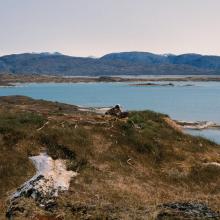
Ikkattoq and adjacent archipelago
- Country:Denmark (Greenland)
- Site number:387
- Area:44,880 ha
- Designation date:27-01-1988
- Coordinates:62°40'N 50°12'W
Materials presented on this website, particularly maps and territorial information, are as-is and as-available based on available data and do not imply the expression of any opinion whatsoever on the part of the Secretariat of the Ramsar Convention concerning the legal status of any country, territory, city or area, or of its authorities, or concerning the delimitation of its frontiers or boundaries.
Overview
The Site represents a typical landscape of the south-western coast of Greenland. It is composed of a shallow fjord and an archipelago, with extensive coastlines and tidal mudflats. The vegetation is dominated by dwarf scrub heath; there are a few large lakes, while ponds are found in depression marshes. This variety of habitats makes the Site important for several bird species which moult and breed within its boundaries, such as the red-breasted merganser and the harlequin duck. Greenland’s densest population of white-tailed eagle, a globally vulnerable species, is found within the Site. During summer, small boats use a sailing route through the western part of the Site, and hunting and fishing take place in the fjord and the surrounding archipelago.
Administrative region:
Kommuneqarfik Sermersooq
- National legal designation:
- Area important to wildlife (Anon. 2000)
- Ramsar site - Ikkattoq
- regulation of traffic at seabird breeding colonies
- Last publication date:15-07-2019
Downloads
Ramsar Information Sheet (RIS)
Archived RIS
Site map
Additional reports and documents
- A description of the site in a national or regional wetland inventory
- Other published literature
